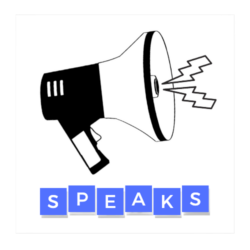Rats in the control and metoprolol alone groups gained weight steadily, while the ketamine-treated rats appeared to have thin, brittle and dull fur. In addition, they were emotionally unstable, more aggressive and easily became anxious. Ketamine-treated rats co-administered metoprolol were in a better state of nutrition and more stable emotionally than those treated only with ketamine. Monitoring includes the patient’s airway, breathing, and circulation, as ketamine can potentially cause cardiopulmonary compromise, especially when taken in combination with other drugs. If the patient vomits, the patient should be positioned to lean forward or lie on the left side with the head facing down to avoid airway compromise and aspiration. Ketamine has been shown to cause bronchodilation and maintain a protective airway better than other anesthetic agents used for sedation, although there have been reports of aspiration.[19] If airway compromise occurs, intubation can provide respiratory support.
Ketamine and other drugs
Acute systemic conditions such as hypoxia, hypoglycemia, sepsis, hyperthyroidism, and electrolyte abnormalities such as hyponatremia should be differentials. Dr. Adam Włodarczyk has received research support from Actavis, Eli Lilly, Minerva Neurosciences, Sunovion Pharmaceuticals, KCR, Janssen, Otsuka, Apodemus, Cortexyme, Acadia, and reports personal fees from actavis,outside the submitted work. A comparison was made in patients who received from first to sixth infusion to evaluate if there was a development of tolerance or adaptation.
Statistical Analysis
The overall study cohort had a median age of 63 years, with orthopedic manipulation as the most common indication for sedation (Table 2). Post-ketamine vital signs showed a notable change in 29% (9/31) of initial readings and 71% (22/31) of readings at any point during the sedation. Although these reactions can be quickly treated with a benzodiazepine, hypertension and tachycardia are often seen during these episodes, along with hallucinations and panic. This can cause an increase in oxygen consumption, as well, that could attribute to observed cardiac effects, specifically in patients with underlying cardiac disease [4-6].
Like any other addiction, ketamine can create a powerful bond that takes control of a person’s life. It is critically important that an individual who engages in inappropriate use of ketamine get professional counseling and treatment. A 2016 study cautions that the inappropriate use of ketamine is a worldwide health problem due to its hallucinogenic properties. With this in mind, they urge doctors to prescribe standard antidepressants before trying ketamine for depression. However, further research is necessary to verify the study findings and prove the safety of using ketamine to treat this condition. Ketamin can sedate, incapacitate, and cause short-term memory loss, and because of this, some people use it as a date-rape drug.
Effects
A comparison was made in patients who received from the first to sixth infusion to evaluate if there was a development of tolerance or tachyphylaxis. The observations apply to an inhomogeneous TRD population in a single-site, pilot study, with no blinding and are limited to the acute administration. The content published in Cureus is the result of clinical experience and/or research by independent individuals or organizations. Cureus is not responsible for the scientific accuracy or reliability of data or conclusions published herein.
- All safety and tolerability findings shall be replicated in a larger sample exposed to the intervention across the long-term study design.
- According to the toxicology data network, there are no medications approved by the U.S.
- Based on this small sample, single-site study, no evidence of statistically or clinically significant ischemia was seen with the use of ketamine for procedural sedation.
- Ketamine toxicity can cause a variety of neurological, cardiovascular, psychiatric, urogenital, and abdominal symptoms, which are dose-dependent, and depend on whether ketamine administration was in an iatrogenic or illicit context.
- Severe addictive practices induced by ketamine abuse are difficult to control and incite abusers to progressively increase ketamine doses.
According to the toxicology data network, there are no medications approved by the U.S. Food and Drug Administration to treat a ketamine overdose, but medications can provide management of agitation and psychosis. Benzodiazepines such as lorazepam and diazepam can alleviate agitation, psychomimetic effects, hypertension, hyperthermia, and seizures. Lorazepam is typically given 2 to 4 mg intravenously or intramuscularly, and diazepam dosing generally is 5 mg to 10 mg IV. Butyrophenones, including haloperidol, have been used to treat psychotic episodes and agitation.[8] Haloperidol is typically given in doses of 5 mg to 10 mg IM and can be administered every 10 to 15 minutes until adequate sedation is achieved. However, providers should exercise caution when using haloperidol, as lowered seizure thresholds, QT prolongation, and torsades de pointes correlate with the prolonged use of haloperidol.
Also, providers should consider intoxication with alcohol, amphetamine, cocaine, LSD, MDMA, and salicylate, as well as delirium tremens from alcohol withdrawal. Malignant hyperthermia that develops after succinylcholine or volatile anesthetics such as halothane, and side effects from antihistamines like diphenhydramine and anticholinergics such as benztropine, can also mimic signs of ketamine intoxication. Ketamine is a general anesthetic that doctors find useful in emergency room settings when performing procedures, such as reducing fractures and treating joint dislocations. Ketamine also causes individuals to have no memory of events that happen while they are under its influence. Due to this effect and its ability to sedate and incapacitate, some people use it as a date-rape drug.
Inhibition of PARP decreased AP1-driven transcription (including collagen Iα1 and IIIα1, MMP-9 and tissue inhibitor of metalloproteinases-1) and effectively prevents cardiac fibrosis and cardiomyocytes from hypertrophy (Pillai et al., 2006; Huang et al., 2009). We observed that after chronic treatment with ketamine, PARP-1 expression was significantly elevated, suggesting its role in ketamine-induced apoptosis and fibrosis. AIF is involved in a caspase-independent pathway of apoptosis by translocating to the nucleus and causing large-scale DNA fragmentation and liquid marijuana mix drink chromatin condensation. Translocation of AIF from mitochondria to the nucleus is required for PARP-1-mediated cell death (Kang et al., 2004).
Consent was obtained during 33 independent patient encounters, and two patients were removed from the study after enrollment. The subjects were removed due to a change in sedation medication or the decision to forego procedural sedation. There were 31 ECGs included in the final evaluation, with two patients enrolled on subsequent visits.
Patients were excluded if they were pregnant, incarcerated, or unable to provide informed consent due to a language barrier or mental status. An initial goal of 50 patients was set, but following two years of recruitment, the study was closed to new subjects. A rough epicardium and notable grey areas were found on the gross view of the hearts in ketamine-treated rats and rabbits.
Another limitation was possible effects of other medications used in the sedation. Timing of ECG obtained during sedation likely had some variability with attempt made to adhere to the one-minute post ketamine administration time frame. Procedural sedation for various indications commonly takes place in the ED setting. Common dosing for ketamine when given intravenously for procedural sedation ranges from 0.25 mg/kg to 1 mg/kg, depending on if other anesthetic and/or analgesic medications are concomitantly administered. Myocardial ischemia has been reported for ketamine [2,8]; however, it is unclear how soon after medication administration that this could result, namely in the immediate, post-administration timeframe (specifically one minute post administration). Sedation protocol was decided by the physician primarily managing patient’s care and was not influenced by the research team.
In the United Kingdom, where ketamine has been classified as a Class C drug since 2006,[9] ketamine misuse alcohol intolerance covid has also decreased during the 21st century. According to the World Health Organization fact file on ketamine, the percentage of adults and young adults in the United Kingdom who used ketamine decreased from 0.6% to 0.4% and from 1.8% to 0.8%, respectively, between 2011 and 2013. We report herein the cardiovascular effects of ketamine adjunctive to an oral antidepressant/mood stabilizer, in patients with TRD. The purpose of this paper is to investigate the relationship between cardiovascular measures and psychometric outcomes in the course of intravenous ketamine treatment in treatment refractory inpatients with MDD and BP. In the ischemia group, the median dose was higher than the milligram per kilogram dosing of the non-ischemia group (0.84 vs. 0.56).
Unnecessary stimulation should be avoided, and the patient’s room should be dim and quiet. If necessary, the health care team may provide physical restraints to initiate IV access and secure the patient’s safety. If sedation does is ambien better than xanax for sleep not adequately manage hyperthermia, evaporative cooling can decrease heat production. In looking at the incidence of new changes suggestive of myocardial ischemia apparent on ECG immediately following administration of ketamine, it is interesting that an occurrence rate of almost 10% was shown in this study with such a small sample size. It is also notable that all of the patients who experienced ischemia were females.

